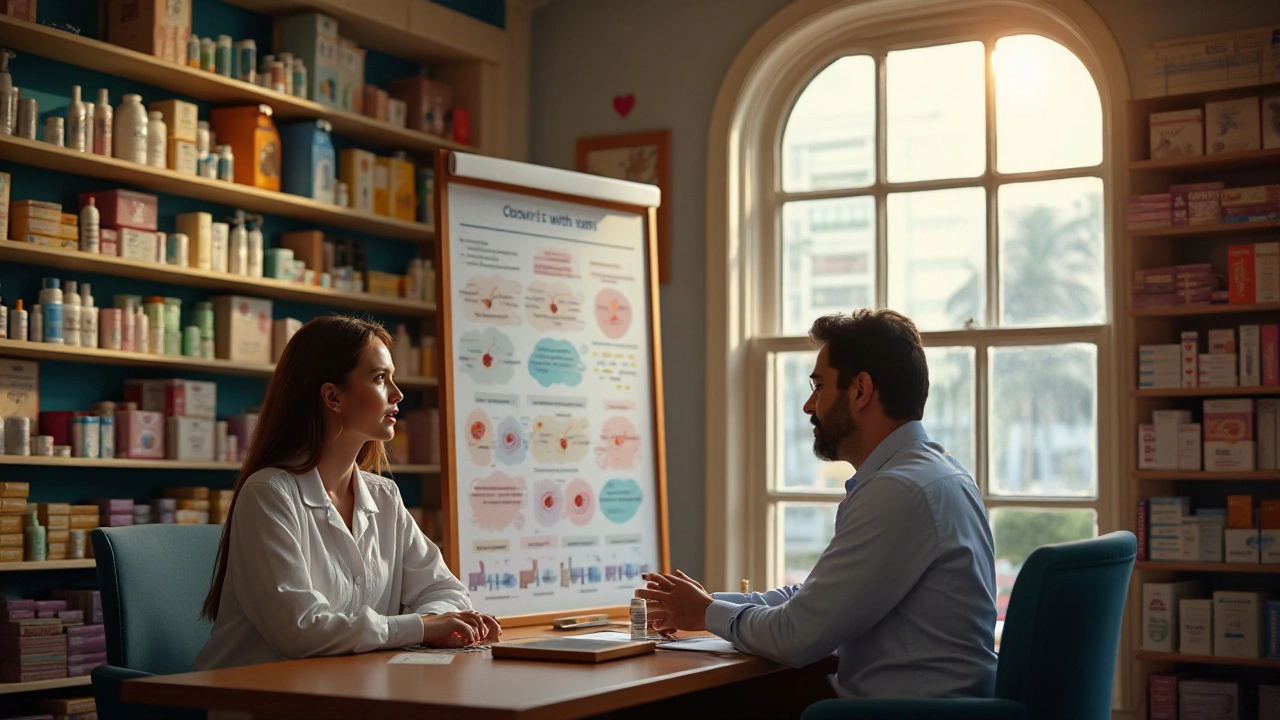Acne products flood the market, but only a few ingredients reliably clear pimples. Start by spotting the active: benzoyl peroxide, salicylic acid, adapalene (a retinoid), and topical antibiotics are the ones dermatologists trust most. Learn what each does so you stop wasting time and money.
Benzoyl peroxide kills acne bacteria and helps prevent new breakouts. Use 2.5–5% for most people. It can bleach towels and hair and cause dryness, so apply once a day at first. Salicylic acid exfoliates inside the pore and works well for blackheads and mild whiteheads. Look for 0.5–2% products in cleansers or leave-on gels.
If your skin is oily, start with a foaming salicylic acid cleanser or a light benzoyl peroxide gel. Dry or sensitive skin needs lower concentrations and hydrating formulas—try a 2.5% benzoyl peroxide leave-on and a non-comedogenic moisturizer. Combination skin can use spot treatments on oily zones and gentler care elsewhere.
Adapalene (0.1% over the counter, 0.3% by prescription) is the best long-term option for comedonal acne and preventing new spots. It can cause redness and flaking for the first 2–4 weeks. Use it at night and moisturize—the irritation usually settles as your skin adjusts.
Always patch test a new product on the inside of your wrist. Introduce one active at a time and give it 4–6 weeks to show results. Avoid combining benzoyl peroxide and retinoids at the same time of day—use one in the morning and one at night to reduce irritation. If you use a benzoyl peroxide product, pick a stable cleanser or gel; avoid alcohol-heavy toners that strip the skin.
Don’t skip sunscreen. Many acne treatments make skin more sun-sensitive. Use a broad-spectrum SPF 30 or higher every morning. Choose mineral sunscreens (zinc or titanium) if you break out from chemical sunscreens.
If over-the-counter options fail after two to three months, see a dermatologist. They can prescribe stronger retinoids, oral antibiotics, hormonal therapy, or isotretinoin for severe acne. Also ask about combination treatments—these often work better than single products.
Buying online? Pick reputable pharmacies or known brands. Check active ingredients and concentrations listed on the label. Avoid unmarked jars, miracle cures, and products that promise overnight fixes—real change takes weeks and steady care.
Watch for hidden cloggers like cocoa butter, lanolin, and heavy oils in moisturizers and makeup. Swap to oil-free, water-based cosmetics. Change pillowcases twice a week, avoid picking or popping pimples — that spreads bacteria and causes scarring. Keep hair off your face and avoid hair styling products that sit on the forehead. Track your progress with photos every two weeks; if spots look inflamed or pus-filled, don't delay medical help. Small habit fixes often speed up results when paired with the right anti-acne products.
Small routine changes add up: gentle cleansing twice a day, targeted actives, daily sunscreen, and a simple non-comedogenic moisturizer. With the right products and patience, acne usually improves without harsh, expensive regimens. Aim for consistency, not perfection, and you'll see steady improvements soon.

Navigating the realm of acne treatment options can be overwhelming, especially when seeking alternatives to Isotroin. This article examines eight potential choices, such as topical retinoids and antibiotics, providing insights into their benefits and drawbacks. From hormonal treatments to innovative lasers, each option offers unique advantages for addressing different types of acne. Learn about their effectiveness, side effects, and practicality in order to make informed decisions for a personalized skincare regime.
More